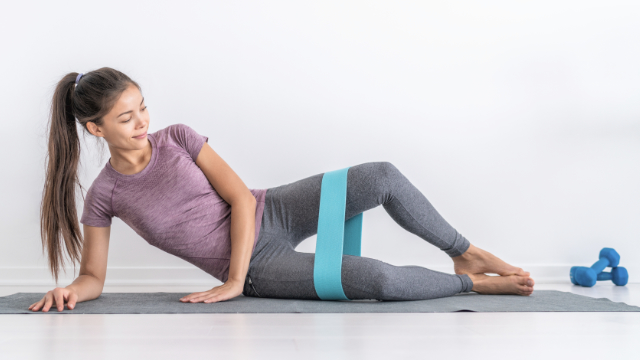News
These 4 Simple Exercises Will Lower Your Risk For Hip Pain

As we saw in our last post, several conditions can develop in the hip and can go on to cause pain and dysfunction. These problems can strike at any age, but are more likely to develop later in life and in females, with the highest incidence of hip pain occurring in women aged 40–60 years.
In most cases, a combination of age–related changes and overuse are responsible, while traumatic injury may be the culprit for certain patients. Whatever the cause, the toll that hip pain takes is often similar, as patients will variably lose their ability to move and function freely. Walking, running, and sitting/standing typically become more labor–intensive tasks, and these limitations will likely persist if no action is taken.
While it’s not possible to reverse or stop natural age–related changes, you can take preventive steps on your own that will lower your risk for hip pain. One of the most effective tactics is to regularly perform exercises that target the muscles of the hip. Doing so will improve both the strength and flexibility of the hip, which means less strain and better overall functioning that equates to a reduced injury risk.
Large, thick muscles of the buttocks and thighs surround the hip and are responsible for the significant amount power that the joint can generate. These muscles are typically classified according to the type of movement that they cause:
- Flexors and extensors: move the leg back and forth
- Abductors: move the leg out to the side
- Adductors: move the leg inward toward the other leg
- Rotators: move the toes inward (internal rotation) or outward (external rotation)
Of these, the hip abductors are usually the weakest group of muscles. The abductors are found in the buttocks and include the gluteus maximus, gluteus minimus, and tensor fascia lata muscles. These muscles contribute in major ways to our ability to stand, walk, and rotate our legs easily, meaning weak abductors can interfere with daily functioning in significant ways. With that in mind, here are 4 of our favorite exercises to stretch and strengthen the hip abductors and reduce your risk for pain:
Our top 4 exercises to help you avoid hip pain
To see videos of each exercise, go to www.MyRTR.net and enter prescription code PW3LGZ2U
- Clam shell side lying
- Lie on your side with your knees slightly bent
- Keep your heels together and raise your top knee up toward the ceiling
- Repeat for two sets of 12 repetitions
- Switch sides and repeat
- You can add a resistance band to make the exercise more challenging
- Hip abduction in hook lying with band
- Lie on your back with your knees bent and feet shoulder–width apart
- Place a resistance band around your thighs, just above the knees
- Separate your knees about 6 inches by pressing your knees into the band and tightening your buttocks
- Repeat for two sets of 12 repetitions
- Hip burners (foot pointed down)
- Lie on your side with your top leg straight and bottom leg slightly bent at the hip and knee
- Raise your top leg up about 6 inches and slightly point your foot down toward floor
- Keeping your top leg straight, slowly move it up and back in a diagonal pattern
- Make sure to move only through the hip while keeping your spine straight
- Repeat for two sets of 12 repetitions
- Switch sides and repeat
- Hip abduction in quadruped
- Begin on your knees with your hands flat on the floor and looking downwards
- Draw in your stomach muscles
- Keeping your spine straight, move your leg out to the side about 4–6 inches, keeping your knee bent throughout the motion
- Repeat for two sets of 12 repetitions
- Switch sides and repeat
- Regularly performing these exercises—every other day or so—will keep your hips strong and will lower your injury risk. But if an issue does arise, it’s best to consult with a physical therapist, who will perform a comprehensive evaluation and design a personalized treatment program that’s suitable for your needs, abilities, and goals. In our two next posts, we’ll look at some evidence that shows why a physical therapy program is effective for various hip–related conditions.
Disclaimer:
The information in the articles, posts, and newsfeed is intended for informational and educational purposes only and in no way should be taken to be the provision or practice of physical therapy, medical, or professional healthcare advice or services. The information should not be considered complete or exhaustive and should not be used for diagnostic or treatment purposes without first consulting with your physical therapist, occupational therapist, physician or other healthcare provider. The owners of this website accept no responsibility for the misuse of information contained within this website.
